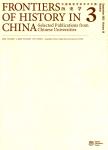Slums, Squats, or Hutments? Constructing and Deconstructing an In-Between Space in Modern Shanghai (1926-65)
Slums, Squats, or Hutments? Constructing and Deconstructing an In-Between Space in Modern Shanghai (1926-65)作者机构:Institut d'Asie Orientale University of Lyon 69365 Lyon Cedex 07 France
出 版 物:《Frontiers of History in China》 (中国历史学前沿(英文版))
年 卷 期:2012年第7卷第4期
页 面:499-528页
学科分类:0303[法学-社会学] 12[管理学] 1204[管理学-公共管理] 08[工学] 081302[工学-建筑设计及其理论] 081303[工学-城市规划与设计(含:风景园林规划与设计)] 0813[工学-建筑学] 0833[工学-城乡规划学] 0603[历史学-世界史] 083302[工学-城乡规划与设计]
主 题:Shanghai hutment slum space urban housing
摘 要:Hutments--a term used to designate "beggars' villages," "straw- house villages" or more bluntly "slums"--became a standard feature of Shanghai's urban landscape in the early 1920s. Located in peripheral areas, they became a central object of concern by the authorities that governed the foreign settlements in the city. Over time, due to economic crisis and above all war, "hutments" slowly colonized the whole urban space and became a massive housing issue and a problematic historical legacy after 1949. This paper argues that hutments arose mostly from the turmoil of the Civil War period. Their nature changed little from the time of their appearance in the 1920s to the early 1950s. Yet, perceptions and policies over three major periods under study here varied significantly. They were strongly influenced by the discursive constructions and distorting lenses the local administrations formulated around issues of nuisance, public health, and city beautification. Each era carried over the concerns and prejudices of the previous period. Yet, new cultural and political postures treatment of hutment dwellers. each municipal institution also brought in that changed the overall discourse and



